Most endurance training plans are predicated on sheer volume. For triathletes, runners, and cyclists, that can mean triple-digit mileage every week. In other sports and activities, it involves more sets, repetitions, and tonnage, possibly across multiple sessions per day. The trouble is that such high volume often leads to injury and in the long run (pun intended), perhaps even career-ending burnout.
Perhaps there’s a better way. What if I told you that you can improve your endurance, as well as strength and power, by rarely doing more than 5 reps per set? Would you be all in? For me, the fact that StrongFirst offered such a plan was absolute music to my ears. With all the trust in the world, I quickly subscribed to the Strong Endurance™ (SE) way, and several months later, I couldn’t be happier with the results.
‘What the hell?’ effect (WTHE): an unexpected side effect from a seemingly unrelated activity
There have been three main ‘What the hell?’ effects that I’ve derived from following Strong Endurance™ protocols. Let’s dive deep into them and explore some of the reasons why SE is working so well for me (and might for you too).
WTHE #1: Curing My Snatch Test ‘Asthma’
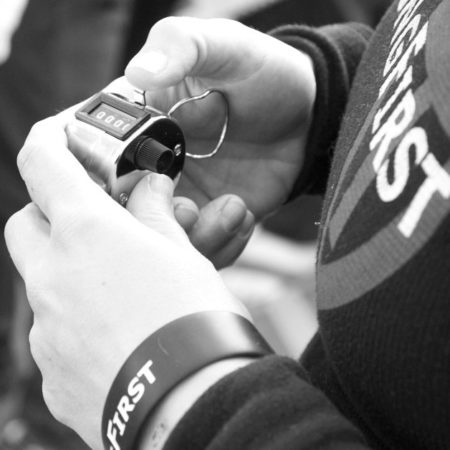
Ah, the infamous (and in my case, dreaded) snatch test. I used to think it was among the worst things I have ever put my body through. The deep burn in my lungs, glutes, hamstrings, and forearms only rivaled the feeling of running 300-meter repeats in high school or sixteen 110-yard sprints in college. Here’s the difference with the snatch test compared to the other two: it all happens within five minutes. That may not seem a very long time, but when you are working at the edge of your capacity, it is absolutely long enough.
I remember my first snatch test as part of my SFG I Kettlebell Instructor Certification in Boston. Forty snatches in, I wanted to quit. It wasn’t pretty and felt like hell. Luckily, I completed my hundredth rep right as time ran out. For the remainder of the day, I struggled to breathe, with my lungs burning. Since then, every time I’ve faced another snatch test, I’ve tried (unsuccessfully) to get out of it. But not last December. This time, I actually looked forward to it. Yes, you’re reading this correctly and no, I haven’t lost my mind.
How I Learned to Stop Worrying and Love the Snatch Test
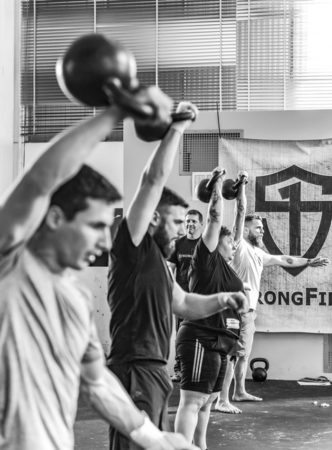
The simple reason for my unusual enthusiasm was that I spent most of the previous year following a Strong Endurance™ protocol, which consisted of heavy single-arm swings and heavy snatches. It is the kind of training plan I’ve always dreamed of—heavy weights, low volume per set, no burn.
Initially, I was skeptical of the program because of the lack of the awful feeling I had become accustomed to while trying to train for endurance. Occasionally I would run a mini test to see how my motor felt and I was surprised when the burn didn’t show up until much later than usual, and then dissipated quickly. I was used to feeling the after-effects for hours. Wow. How can this be? Where was my usual exercise-induced asthma?
All About That Base
Through further research and thanks to Pavel’s Strong Endurance™ insights, I figured out that the most likely culprit was a poor aerobic base. I mistakenly thought that because I had been running since I was a kid, I would have built an aerobic base for life. But as I thought back to running long distances, it seemed to be a long history of ramped up heart rates, poor performance, and a super-acidic stomach.
Without knowing the science, through years of training, I had turned myself into a completely anaerobic/glycolytic athlete. I only knew the burn; I only knew high-intensity. Later, I added strength, but true endurance was something I never had. After reading Pavel’s research and the science behind the SE protocols, I understood what I needed to do in order to make the snatch test less intimidating, and it wasn’t dozens of junk miles, endless high-rep sets, or punishing 10-exercise circuits.
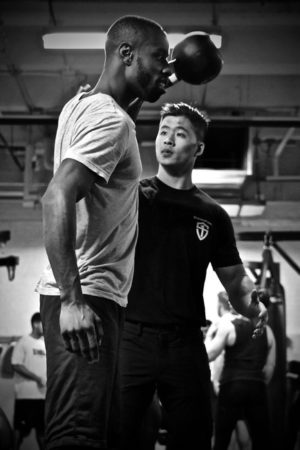
The basic thesis of Strong Endurance™ protocols is training to avoid ‘going glycolytic’ for as long as possible. What does that mean? Feeling ‘the burn’ is a sign that anaerobic glycolysis has overtaken your other two energy systems (aerobic and anaerobic alactic). Our glycolytic system is our backup energy system—it is meant to kick in when our mitochondria can’t turn oxygen into ATP fast enough. This is inherently inefficient, which is why acid builds up and our work becomes limited soon after. On my snatch test, for example, once I triggered the burn, it was just a short time before my performance would go uncomfortably and rapidly downhill.
Don’t Get Burned
You can choose to seek the burn and develop your mental toughness and capacity to dig deeper despite it. Admittedly, you need this capacity on ‘fight’ days, but glycolytic peaking is a short-term training strategy best kept for the last few weeks before your big event. Abusing your glycolytic system for any longer has damaging and ageing effects on your mitochondria, as Pavel outlines in The Quick and the Dead.
Alternatively, you can train to increase your ability to recover aerobically, teach your mitochondria to handle more oxygen for longer, and improve your performance by delaying the buildup of acid. This works for both endurance events and repetitive, explosive efforts as well, i.e., my dreaded snatch test.
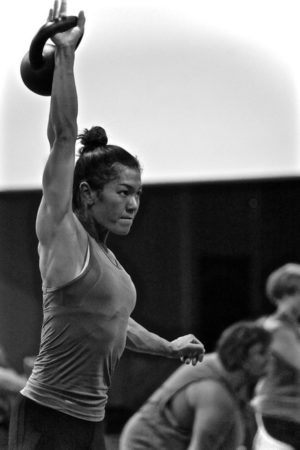
I felt the difference after only a few months of running SE protocols, which is a surprisingly fast turnaround. I was snatching a 32kg bell for five minutes only a year after feeling like I was going to die with a 24kg. My lungs felt fine, I did not experience my normal post-work cough, and my resting heart rate fell back to normal soon after.
Before I started Strong Endurance™, I thought I was asthmatic and therefore it was inevitable that the snatch test would take my soul (or at the very least, my lungs). Now I realize that my past training wasn’t directed towards the result I needed or making the task at hand easier.
WTHE #2: Increased Athleticism
For three months, I had been strictly preparing for the Tactical Strength Challenge, focused mainly on deadlifts, snatches, and swings—no running, no jumping. Although it probably wasn’t the smartest idea, I also started playing in an adult basketball league. Basketball was a sport I had enjoyed before, though I definitely am not prime Kobe. In the past, I would start running up and down the court powerfully, but my performance would suffer drastically as the burn increased.
What I have noticed while playing recently is that, for the first time ever, I am able to run up, down, and around the court, and still play defense the whole game without subbing out. I feel extremely light and explosive when I go to jump, whether it be for a rebound or a layup. I have confidence passing the ball with either hand, which is a completely new feeling. And yet, I don’t practice, ever.
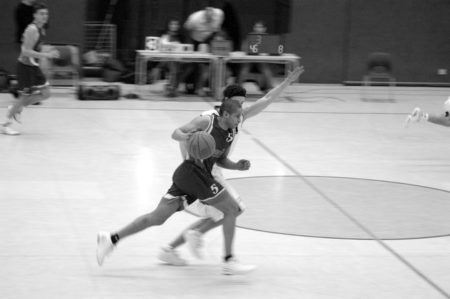
Hoops and Hinges
What the hell is going on? In basketball, you run, jump, and move in all planes of motion. You use both arms, both legs, and your trunk; you accelerate, decelerate, rotate, pivot, and change directions; you are often in an athletic stance whether on offense or defense. What is an athletic stance? It’s the hip hinge position of a swing or deadlift. In Simple and Sinister, Pavel refers to the swing as the “athlete builder.”
As I am doing hundreds of reps per week of hip hinges, I am very strong and comfortable in that position. I have developed lots of rotary stability from single-arm swings, which allows for change in direction, improves balance, and enhances running ability by connecting the big engines of the hips and shoulders through a strong trunk (your ‘big X’). Plus, alternating hands for snatches and swings helps build coordination. These abilities are all very important for basketball, and many sports besides.
This could explain why dribbling and passing with my left hand have improved even with time away from the sport. During the kettlebell snatch, we project energy upward to the overhead lockout with a powerful hip drive. This move replicates vertical jumping, while being very easy on the joints compared to Olympic lifting or plyometrics. Perhaps this explains why I feel like I can jump through the roof and why landing doesn’t hurt my knees. The eccentric overload portion of the catch after completing a snatch imitates the same kind of deceleration experienced during jump landing.
Finally, what explains being able to run, seemingly forever, without ever running in training? Simple: Strong Endurance™ training dramatically improved my aerobic base. I had been used to running and performing without having one. No longer. Now I have a solid foundation on which to improve my performance.
WTHE #3: I Can Do This Everyday
As we now know, it’s acidosis that essentially leads to stiffness, soreness, and lack of energy a day or two later after a training session (manifesting as Delayed Onset Muscles Soreness, or DOMS). I’ve never desired any of those feelings; I doubt that anyone with a busy work and family life, active hobby or duty does either.
I remember thinking that not being sore meant I hadn’t worked hard enough. I attributed soreness and stiffness to gains so I would chase them. However, I started to realize that habitually having those feelings is an indicator of an upcoming injury. Whether it was a wonky shoulder, or a cranky back or knee, it was often preceded by feeling sore for weeks on end.
Constantly pushing yourself close to or reaching failure day in and day out usually leads to getting hurt. You may even feel great at first, but that’s usually your ego talking. Chasing failure is a ticking time bomb waiting to explode. Do high-intensity sessions with significant volume often enough, and you will start to notice that you feel lousy all the time.
Less Is More
In contrast, SE enables me to train six to seven days per week and I have felt great throughout. I am training more days than I used to and feel better than when I trained less. Perhaps it’s because I am not using max loads or extremely high volume. My work time is about 10 to 15 seconds per set and I only train one to three movements per day.
Here are some actional steps for you to thrive with a similar plan:
- Focus on movement quality and efficiency—there is always something you can do better.
- If power drops off during a set, don’t blow through that stop sign. Put the bell down, and allow yourself to recover before you go again.
- When training for the snatch test, practice doing 10 reps every 30 seconds. Avoid feeling the burn unless you are peaking. If you currently feel the burn after doing only a few sets of 10 reps every 30 seconds, decrease the number of reps per set.
WTHE at the TSC
Remember that TSC I was training for? Well with a custom Plan Strong™ program for the deadlift and pull-ups, plus the Strong Endurance™ protocol for my snatch test, I hit some pretty unbelievable results for a short three months of training. I PR’d my deadlift, pulling 575lb at a bodyweight of 178lb. I also PR’d my weighted pull-ups, hitting twenty reps with 10kg. And my snatch test? I PR’d 80 reps with 32kg in five minutes.
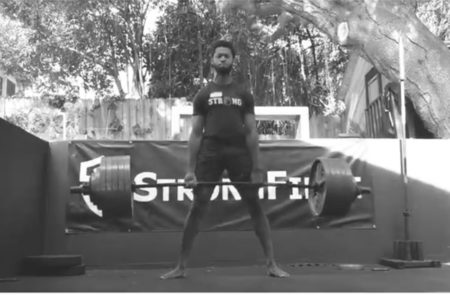
If you’re only continuing with a training plan because that’s what you’re used to and have always done before, I challenge you to seriously reconsider your approach. I was able to PR most of my lifts, tame the snatch test, and play a season of basketball without getting injured. If you’re looking for an efficient way to boost your endurance that can fit your lifestyle and doesn’t require a more-more-more approach that will potentially increase your injury risk, look no further.
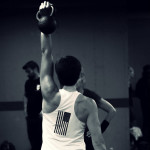
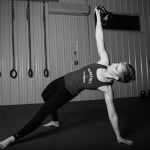
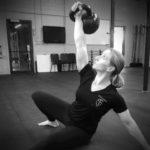
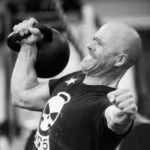

I love this concept,does it. apply to other routines like the naked worrior ?
I’ve been experimenting with low rep one arm swings. I typically do 5 reps and rest 2 minutes or more. At 45 I work 6 days a week in a cold storage warehouse and play soccer every Saturday evening. I’m amazed how strong I feel at work and on the field. This approach to training will keep me strong for many years to come. I will never chase the burn again.
Nice…How you train in week?
Are you use also A+A or just Q&D?
The training that I am speaking of in this article is A + A utilizing a different protocol that Pavel covers during Strong Endurance not Q & D. The sessions lasted well over the 30 minute max that Pavel outlines in Q & D.
Okay So How looks like your training in week schelude?
Thanks
I really enjoyed reading this article. I can relate to it very well as my aerobic base is rather poor and I’m looking to compete in the TSC next spring. I just got off finishing a deadlift singles program (link) and hope to have gotten closer to my goal of lifting 450lbs. But I can barely do 3 pull-ups and a 5min snatch test would probably require me to have the paramedics on stand-by.
I was thinking of doing Simple & Sinister again to build up my aerobic base but after reading your article, I’m not sure if using some protocols from the Quick and the Dead would be a better choice. I’ve reached the simple standard in S&S in the past and can currently do TGUs with a 40kg but if I had to pass the swing’s portion of the simple test again, I know it would be a struggle for life due to my poor aerobic base. Any recommendations? I’d also like to maintain or increase my deadlift strength if possible.
By the way, congrats Denzel on your TSC achievements!
Hi Leonardo,
Glad to hear you are thinking about doing the TSC in the spring.
I would recommend doing the protocol I briefly touch on this article. It is not Q & D but a different Strong Endurance protocol that is more geared towards improving the aerobic base since the work time is a little longer. If you haven’t attended a Strong Endurance event I highly recommend it.
Thank you for the article.
Will a book be available going in to the details of what you have written about?
Conrad, there is a link in the article for the book, “The Quick and the Dead” by Pavel Tsatsouline. Check it out, I’m sure it has what you are looking for.
Here is the link just in case… https://www.strongfirst.com/shop/books/the-quick-and-the-dead-paperback/
Thank you Leonardo. Does this book cover the Strong Endurance principals?
Sadly, I was unable to attend the Strong Endurance course in the UK so would like to fill in the gaps until this course next comes here.
Cheers,
Conrad
Conrad, I’m currently listening to the audible version of The Quick and the Dead and I haven’t attended a Strong Endurance course, so I wouldn’t be able to answer that question.
Great article. I started Q&D snatch protocol few weeks ago and I think I’m already feeling some effects.. mostly aerobic adaptations, running felt easier, long cycle set felt easy etc…
Thank you. Glad to hear you are already feeling some positive effects.